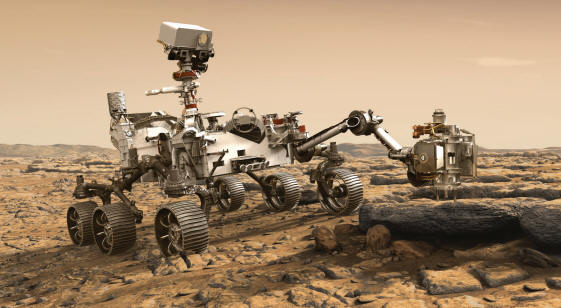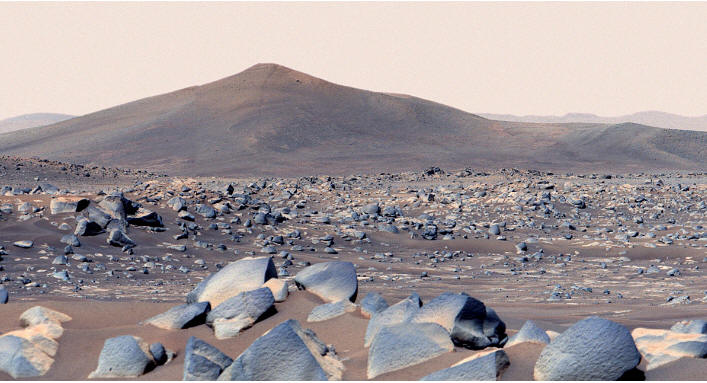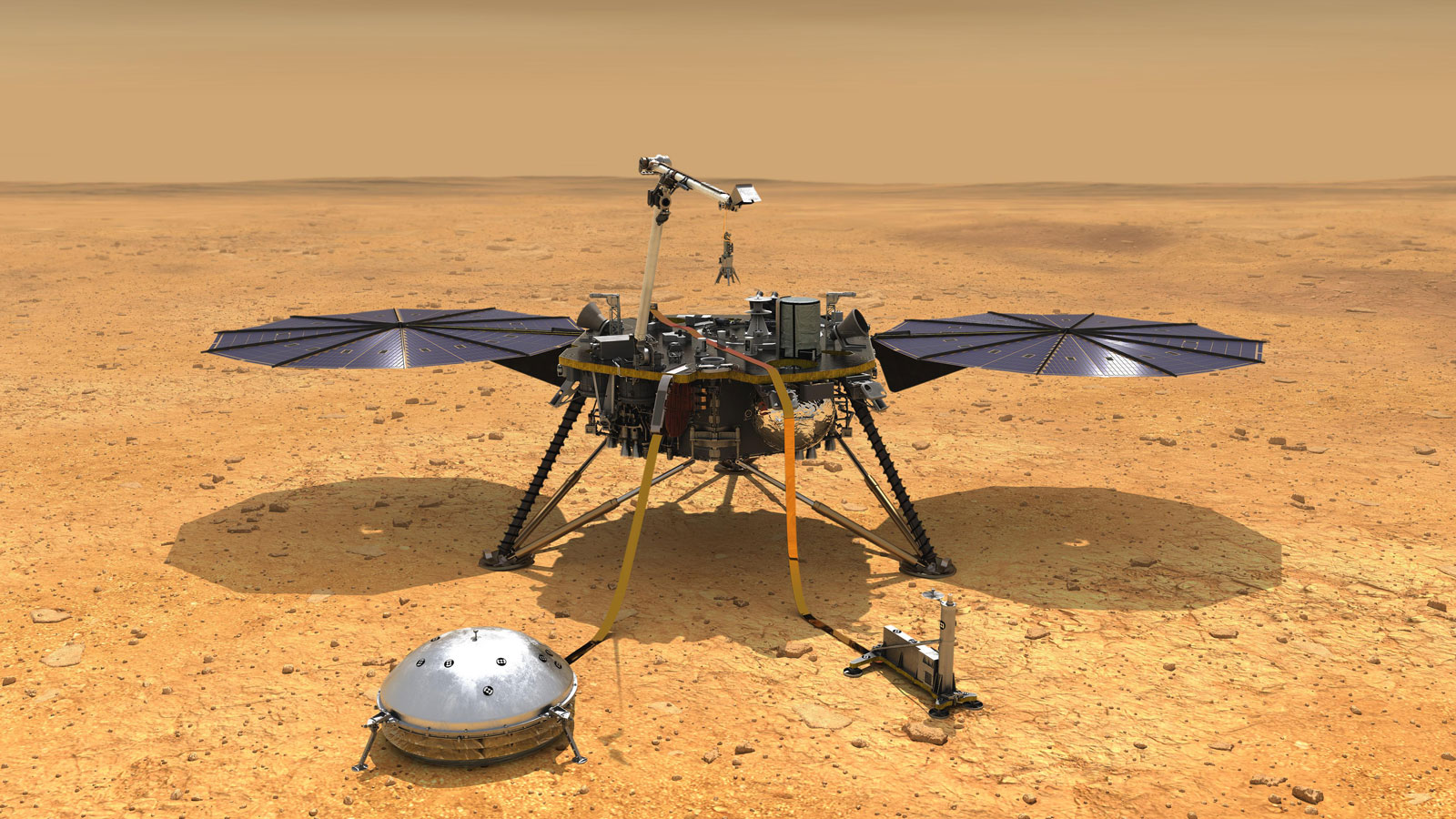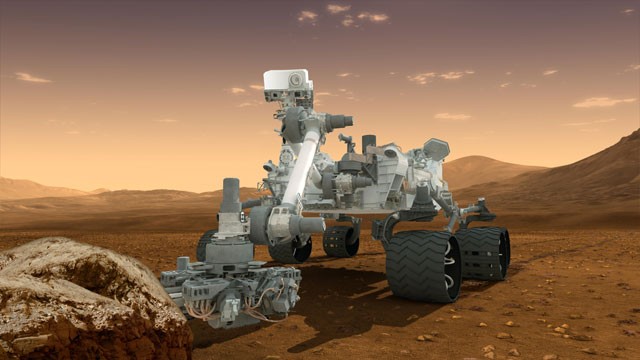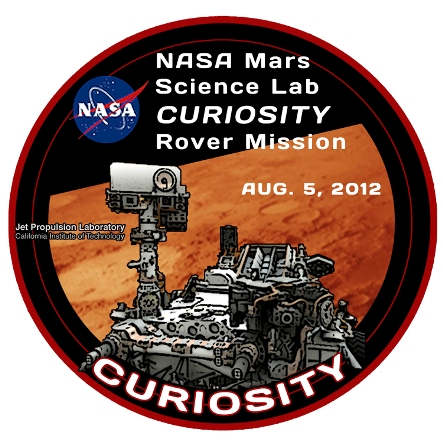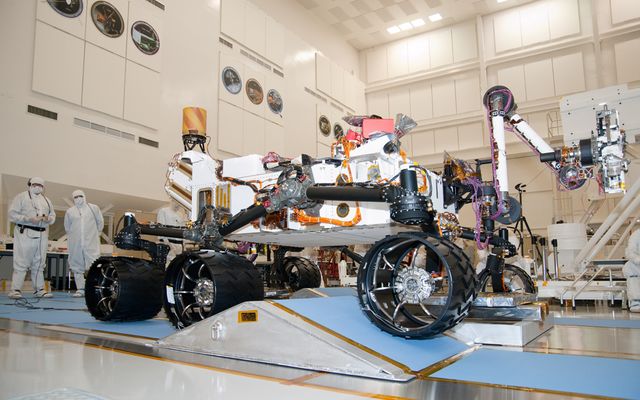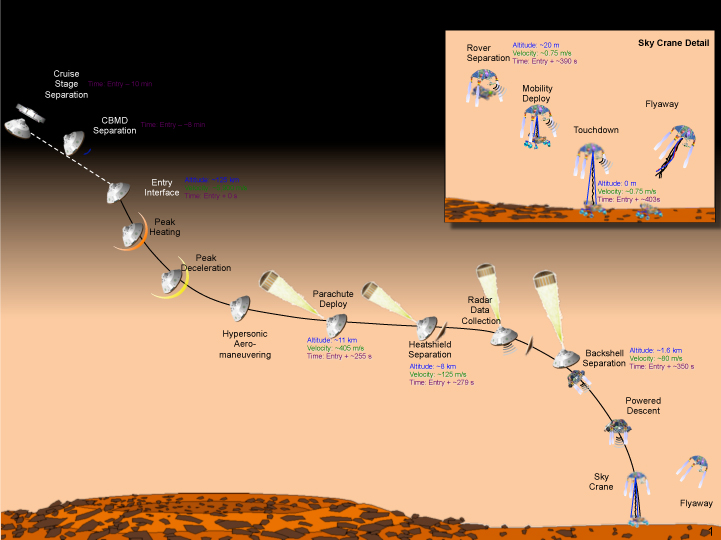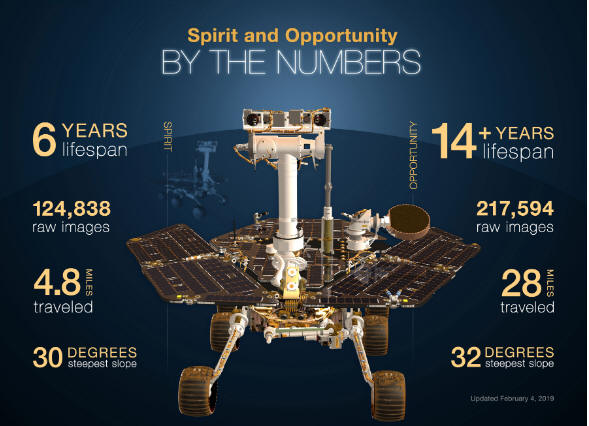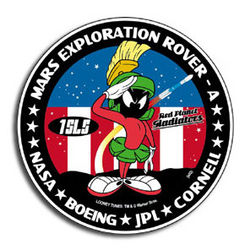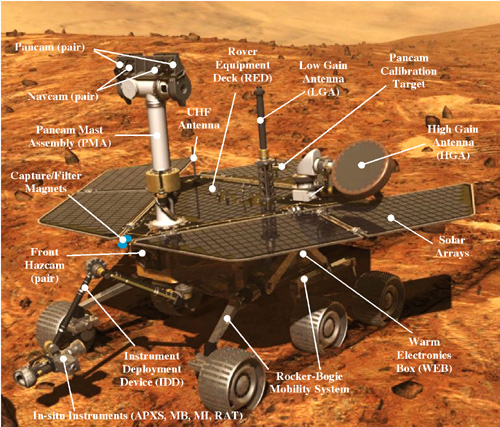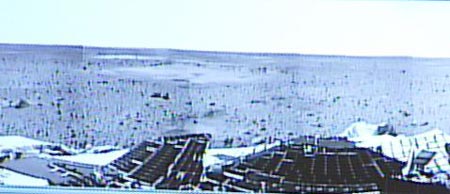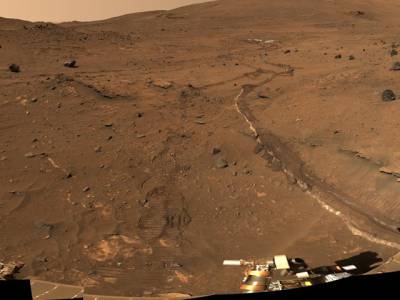
|
||||||||||||
|
|
|
Mars Exploration Rovers Mars 2020/Perseverance
Mission Timeline Main Job: Seek signs of ancient life and collect samples of rock and regolith (broken rock and soil) for possible return to Earth. • Launch in July-August 2020 from Cape Canaveral Air Force Station, Florida • Launching on a ULA Atlas 541 procured under NASA’s Launch Services Program • Land on Mars on February 18, 2021 at the site of an ancient river delta in a lake that once filled Jezero Crater • Spend at least one Mars year (two Earth years) exploring the landing site region
NASA’s Perseverance Mars rover snapped this view of a hill in Mars’ Jezero Crater called “Santa Cruz” on April 29, 2021, the 68th Martian day, or sol, of the mission. About 20 inches (50 centimeters) across on average, the boulders in the foreground are among the type of rocks the rover team has named “Ch’ał” (the Navajo term for “frog” and pronounced “chesh”). Perseverance will return to the area in the next week or so.
The Mars Helicopter, Ingenuity, hitched a ride with the Perseverance rover and successfully demonstrated powered flight on Mars. It continues in an operations demo phase, exploring how future rovers and aerial explorers can work together. Insight Lander InSight, short for Interior Exploration using Seismic Investigations, Geodesy and Heat Transport, is a Mars lander designed to give the Red Planet its first thorough checkup since it formed 4.5 billion years ago. It is the first outer space robotic explorer to study in-depth the "inner space" of Mars: its crust, mantle, and core.
InSight launched from Vandenberg Air Force Base in California on May 5, 2018. After a six-month cruise, InSight landed on Mars on Nov. 26, 2018, at 11:52:59 a.m. PT (2:52:59 p.m. ET) and began Mars surface operations. . Curiousity
Mission name: Mars Science Laboratory Rover name: Curiosity rover Size: About the size of a small SUV -- 10 feet long (not including the arm), 9 feet wide and 7 feet tall -- (about 3 meters long (not including the arm), 2.7 meters wide, and 2.2 meters tall), or about the height of a basketball player. Arm Reach: About 7 feet (2.2 meters) Weight: 900 kilograms (2,000 pounds) Features: Geology lab, rocker-bogie suspension, rock-vaporizing laser and lots of cameras Mission: To search areas of Mars for past or present conditions favorable for life, and conditions capable of preserving a record of life
Launched: Landed: Length of mission on Mars: The prime mission will last one Mars year or about 23 Earth months.
With its rover named Curiosity, Mars Science Laboratory mission is part of NASA's Mars Exploration Program, a long-term effort of robotic exploration of the red planet. Curiosity was designed to assess whether Mars ever had an environment able to support small life forms called microbes. In other words, its mission is to determine the planet's "habitability.
"NASA’s Mars Science Laboratory mission set down a large, mobile laboratory — the rover Curiosity — at Gale Crater, using precision landing technology that makes many of Mars’ most intriguing regions viable destinations for the first time. During the 23 months after landing, Curiosity will analyze dozens of samples drilled from rocks or scooped from the ground as it explores with greater range than any previous Mars rover. Curiosity carries the most advanced payload of scientific gear ever used on Mars’ surface, a payload more than 10 times as massive as those of earlier Mars rovers. Its assignment: Investigate whether conditions have been favorable for microbial life and for preserving clues in the rocks about possible past life. Mission Overview Mars Science Laboratory/Curiosity National Aeronautics and Space Administration NASA’s Mars Science Laboratory mission set down a large, mobile laboratory — the rover Curiosity — at Gale Crater, using precision landing technology that makes many of Mars’ most intriguing regions viable destinations for the first time. During the 23 months after landing, Curiosity will analyze dozens of samples drilled from rocks or scooped from the ground as it explores with greater range than any previous Mars rover.
This panorama
is a mosaic of images taken by the Mast Camera (Mastcam) on the NASA Mars
rover Curiosity while the rover was working at a site called "Rocknest" in
October and November 2012.
Engineers designed the spacecraft to steer itself during descent through Mars’ atmosphere with a series of S-curve maneuvers similar to those used by astronauts piloting NASA space shuttles. During the three minutes before touchdown, the spacecraft slowed its descent with a parachute, then used retrorockets mounted around the rim of an upper stage. In the final seconds, the upper stage acted as a sky crane, lowering the upright rover on a tether to the surface. Curiosity is about twice as long (about 3 meters or 10 feet) and five times as heavy as NASA’s twin Mars Exploration Rovers, Spirit and Opportunity, launched in 2003. It inherited many design elements from them, including six-wheel drive, a rocker-bogie suspension system and cameras mounted on a mast to help the mission’s team on Earth select exploration targets and driving routes. Unlike earlier rovers, Curiosity carries equipment to gather samples of rocks and soil, process them and distribute them to onboard test chambers inside analytical instruments.
Opportunity & Spirit
NASA's twin robot geologists, the Mars Exploration Rovers, launched toward Mars on June 10 and July 7, 2003, in search of answers about the history of water on Mars. They landed on Mars January 3 and January 24 2004 . The Mars Exploration Rover mission is part of NASA's Mars Exploration Program, a long-term effort of robotic exploration of the red planet.
A Postcard From Opportunity Views from the jagged-edged Victoria Crater on Mars, taken by NASA's Opportunity rover NASA JPL VIdeo
First image from Spirit posted on NASA/JPL website
A Postcard From Spirit NASA's Spirit rover sends a stunning panorama from Gusev Crater, Mars NASA JPL VIdeo
This 360-degree view, called the "McMurdo" panorama, comes from the panoramic camera (Pancam) on NASA's Mars Exploration Rover Spirit. From April through October 2006, Spirit has stayed on a small hill known as "Low Ridge." There, the rover's solar panels are tilted toward the sun to maintain enough solar power for Spirit to keep making scientific observations throughout the winter on southern Mars. This view of the surroundings from Spirit's "Winter Haven" is presented in approximately true color.
Credit:NASA |
